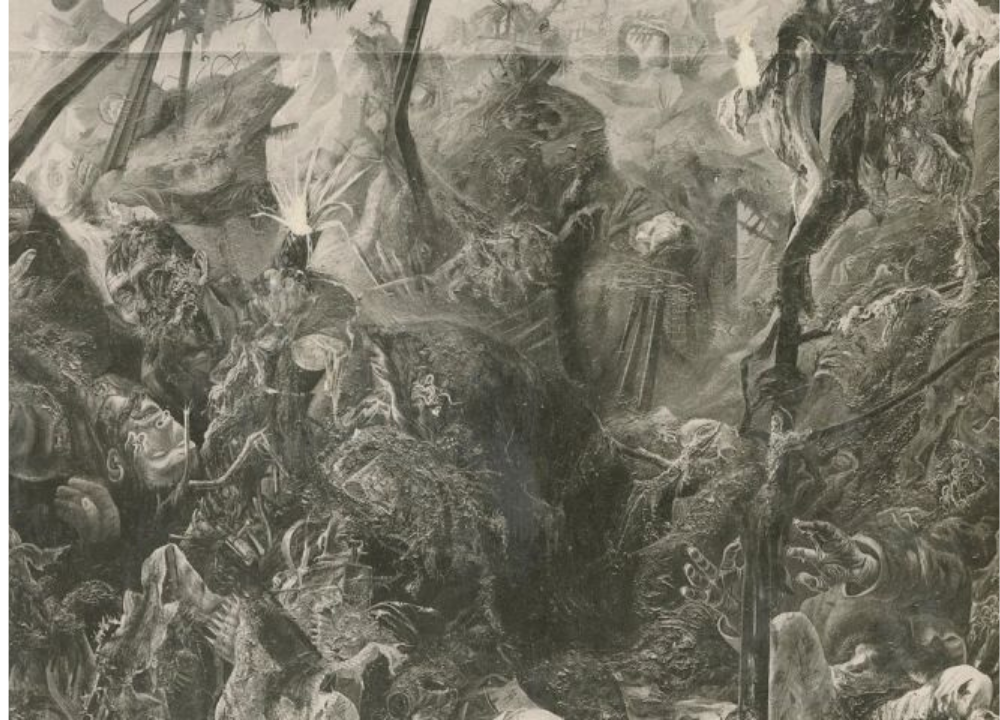This Article is sponsored by Eternal3d.com where you can build your own 3d digital museum.
The evolution of 3D art in the art world has been a fascinating journey that has significantly impacted the way art is perceived, created, and experienced. Here is a brief overview of its evolution and significance:
- Early Origins:
- The origins of 3D art can be traced back to ancient civilizations, where sculptors and artisans crafted three-dimensional representations of people, animals, and objects using various materials like stone, clay, and metal.
- Throughout history, 3D art has been used as a means of expression and a reflection of cultural beliefs, religious symbolism, and social ideologies.
- The origins of 3D art can be traced back to ancient civilizations, where sculptors and artisans crafted three-dimensional representations of people, animals, and objects using various materials like stone, clay, and metal.
- Throughout history, 3D art has been used as a means of expression and a reflection of cultural beliefs, religious symbolism, and social ideologies.
- The origins of 3D art can be traced back to ancient civilizations, where sculptors and artisans crafted three-dimensional representations of people, animals, and objects using various materials like stone, clay, and metal.
- Throughout history, 3D art has been used as a means of expression and a reflection of cultural beliefs, religious symbolism, and social ideologies.
- The origins of 3D art can be traced back to ancient civilizations, where sculptors and artisans crafted three-dimensional representations of people, animals, and objects using various materials like stone, clay, and metal.
- Throughout history, 3D art has been used as a means of expression and a reflection of cultural beliefs, religious symbolism, and social ideologies.
- The origins of 3D art can be traced back to ancient civilizations, where sculptors and artisans crafted three-dimensional representations of people, animals, and objects using various materials like stone, clay, and metal.
- Throughout history, 3D art has been used as a means of expression and a reflection of cultural beliefs, religious symbolism, and social ideologies.
- The origins of 3D art can be traced back to ancient civilizations, where sculptors and artisans crafted three-dimensional representations of people, animals, and objects using various materials like stone, clay, and metal.
- Throughout history, 3D art has been used as a means of expression and a reflection of cultural beliefs, religious symbolism, and social ideologies.
- Renaissance and Beyond:
- The Renaissance period saw a renewed interest in realistic representation, leading to advancements in sculpting techniques, anatomy, and perspective.
- Renowned artists like Michelangelo and Donatello created iconic 3D sculptures that showcased the human form in a lifelike manner, pushing the boundaries of artistic expression.
- Modernism and Beyond:
- The 20th century witnessed significant experimentation in the realm of 3D art, with artists exploring abstract and conceptual forms.
- Sculptors like Constantin Brâncuși and Alexander Calder introduced innovative approaches, using new materials like wire and mobiles to create dynamic and kinetic artworks.
- Technological Advancements:
- The advent of technology brought revolutionary changes to 3D art. With the rise of digital tools, artists gained access to new possibilities for creating and presenting 3D art.
- Computer-generated imagery (CGI), 3D printing, and virtual reality opened up new avenues for artists to push the boundaries of creativity and engage audiences in novel ways.
- Conceptual Art and Installation Art:
- The late 20th and early 21st centuries saw a surge in conceptual art and installation art, where artists used 3D elements to create immersive environments and experiences.
- 3D art installations often involve viewer interaction and engagement, blurring the lines between the artwork and the observer.
- Public Art and Land Art:
- 3D art expanded beyond traditional gallery spaces, with artists creating large-scale sculptures and installations in public spaces and natural landscapes.
- Land art and public art installations often engage with their surroundings, emphasizing the connection between art, nature, and the community.
Significance of 3D Art in the Art World:
- Expanded Possibilities: 3D art has expanded the possibilities for artists to experiment with different forms, materials, and technologies, allowing them to create innovative and thought-provoking artworks.
- Immersive Experience: 3D art galleries and installations offer an immersive experience for viewers, encouraging active participation and creating lasting memories.
- Interdisciplinary Collaboration: The evolution of 3D art has led to increased collaboration between artists, architects, designers, and engineers, fostering interdisciplinary creativity.
- Reimagining Spaces: 3D art has challenged traditional notions of exhibition spaces, transforming how artworks are displayed and experienced, both indoors and outdoors.
- Social Commentary: Many 3D art installations address social, political, and environmental issues, using their physical presence to provoke dialogue and awareness.
- Technological Advancement: The integration of technology in 3D art has pushed the boundaries of what is possible, creating new frontiers for artistic expression and innovation.
In conclusion, 3D art has come a long way from its early origins, and its significance in the art world continues to grow. It has transcended conventional artistic boundaries, offering artists and audiences alike a dynamic and transformative experience. As technology and creativity continue to evolve hand in hand, the future of 3D art promises to be even more captivating and influential in the art world.



